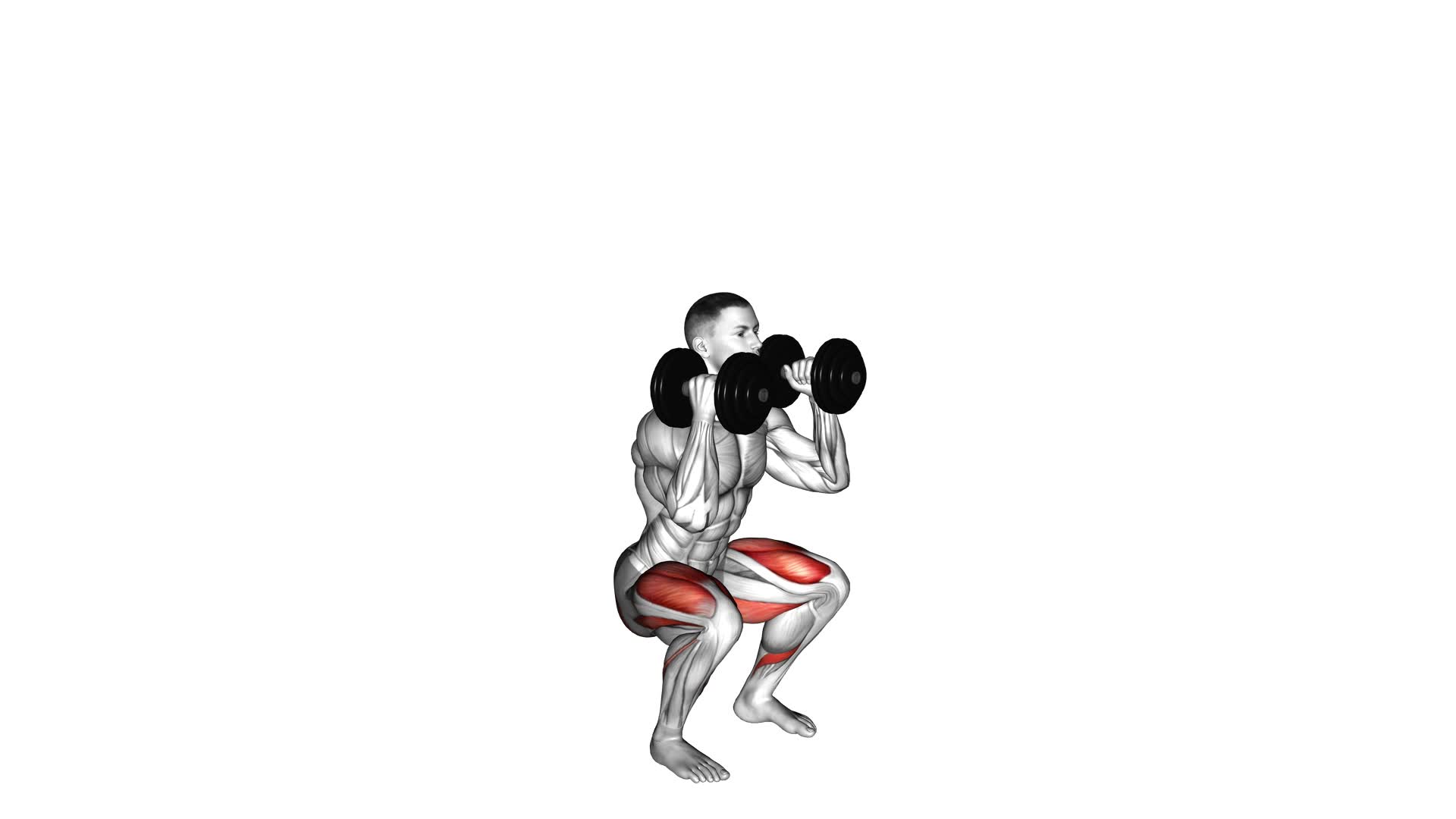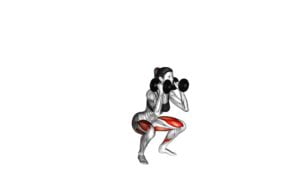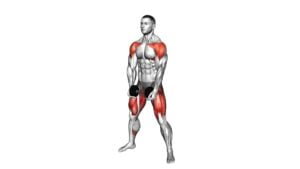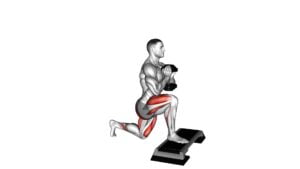Dumbbell Front Squat – Video Exercise Guide & Tips

Looking to add a challenging exercise to your workout routine? Try the dumbbell front squat!
Watch This Exercise Video
This video exercise guide and tips will show you the proper form and technique to maximize results. Avoid common mistakes and explore variations and progressions to keep pushing your limits.
Get ready to strengthen your lower body and core with this effective compound exercise.
Let's dive in and elevate your fitness game!
Key Takeaways
- Engages core muscles for stability and balance
- Targets quadriceps, hamstrings, and glutes
- Allows for progression by increasing weight
- Improves balance and coordination
Benefits of the Dumbbell Front Squat
To maximize your strength and stability, incorporate the dumbbell front squat into your workout routine. This exercise offers several advantages and targets multiple muscle groups for effective muscle activation.
One of the main advantages of the dumbbell front squat is its ability to engage your core muscles. As you hold the dumbbells in front of your body, your core muscles work harder to maintain stability and balance. This not only strengthens your core but also improves overall stability, which is essential for other exercises and daily activities.
Additionally, the dumbbell front squat targets your quadriceps, hamstrings, and glutes. By holding the dumbbells at your shoulders and performing squats, you activate these major muscle groups, promoting muscle growth and improving lower body strength. This exercise also helps improve your balance and coordination, as you have to maintain proper form throughout the movement.
Incorporating the dumbbell front squat into your routine offers a more challenging variation compared to traditional squats. It allows you to increase the weight as you progress, further enhancing muscle activation and strength development.
Proper Form and Technique
To perform the dumbbell front squat with proper form and technique, you need to focus on maintaining a stable core and correct body positioning. This exercise is often misunderstood, and there are some common misconceptions that need to be addressed.
First, it's important to note that the dumbbells should be held in front of your shoulders, not resting on them. This helps to engage your core and upper body muscles. Additionally, make sure to keep your feet shoulder-width apart and your knees in line with your toes as you lower into the squat. Avoid letting your knees cave inwards or pushing them too far forward.
Modifications and adaptations can be made to suit your fitness level and goals. If you're new to this exercise, start with lighter dumbbells or no weight at all to practice your form. As you become more comfortable, you can gradually increase the weight. If you have lower back issues, you can try using a goblet squat variation, where you hold a single dumbbell in front of your chest instead of two dumbbells. This can help to reduce strain on your lower back while still targeting your lower body muscles.
Common Mistakes to Avoid
One common mistake to avoid when performing the dumbbell front squat is allowing your knees to cave inwards or push too far forward. This can put unnecessary strain on your knees and increase the risk of injury.
To ensure proper form and avoid these pitfalls, keep the following in mind:
- Keep your knees in line with your toes throughout the movement. This helps maintain stability and prevents your knees from shifting inward.
- Engage your core and maintain a neutral spine. This helps to distribute the weight evenly and prevents your knees from pushing too far forward.
- Focus on pushing through your heels as you rise from the squat. This helps to activate your glutes and hamstrings, reducing the pressure on your knees.
By avoiding these common errors, you can perform the dumbbell front squat effectively and safely.
Now let's move on to the next section about variations and progressions, where we'll explore different ways to challenge and progress this exercise.
Variations and Progressions
Now let's explore different ways you can challenge and progress the dumbbell front squat in order to continue improving your strength and fitness.
There are a few variations and advanced training techniques you can incorporate to take your workout to the next level.
One option is to try using alternative equipment such as a barbell or kettlebell instead of dumbbells. This will add variety to your routine and engage your muscles in different ways. The barbell front squat, for example, requires more stability and core strength, while the kettlebell front squat challenges your grip strength.
Another way to progress the dumbbell front squat is by increasing the weight. Gradually adding more weight will help you build strength and muscle mass over time. Start with lighter dumbbells and gradually increase the load as you become more comfortable and confident.
You can also experiment with tempo variations, such as slowing down the eccentric (lowering) phase of the squat or pausing at the bottom of the movement. These techniques can help you develop better control and stability, as well as enhance your muscular endurance.
Incorporating advanced training techniques like drop sets, supersets, and pyramid sets can also make your workouts more challenging. These techniques involve manipulating the volume and intensity of your training by performing multiple sets with little to no rest in between.
Tips for Maximizing Results
Maximize your results by incorporating these tips into your dumbbell front squat routine:
- Increase Intensity:
- Gradually increase the weight of the dumbbells you use for front squats. This will challenge your muscles and help you build strength and muscle mass.
- Incorporate supersets or dropsets into your workout. By performing another exercise immediately after your dumbbell front squats or by decreasing the weight and continuing the set, you can push your muscles to work harder and increase the intensity of your workout.
- Modify the tempo of your squats. Slow down the lowering phase of the squat to increase the time under tension and make the exercise more challenging.
- Prevent Plateau:
- Vary the foot positioning. Experiment with wider or narrower stances to target different muscles and stimulate new growth.
- Incorporate other squat variations into your routine, such as goblet squats or barbell squats. This will challenge your muscles in different ways and prevent them from adapting to the same exercise.
- Add plyometric exercises, like squat jumps or box jumps, to your routine. These explosive movements won't only increase the intensity but also help break through plateaus by engaging different muscle fibers.
Frequently Asked Questions
How Heavy Should the Dumbbells Be for a Beginner Attempting the Dumbbell Front Squat?
For beginners attempting the dumbbell front squat, it's important to start with a weight that challenges you, but not one that's too heavy. The optimal dumbbell weight will vary depending on your strength and fitness level.
It's recommended to start with lighter dumbbells, around 5-10 pounds, and gradually increase the weight as you feel more comfortable and confident with the exercise.
Remember to focus on proper form and technique before progressing to heavier weights.
Can the Dumbbell Front Squat Be Performed Without a Squat Rack?
Yes, you can definitely perform the dumbbell front squat without a squat rack. There are several alternatives and variations of the dumbbell front squat that you can try.
For example, you can hold the dumbbells at your sides or even perform goblet squats using a single dumbbell. These variations allow you to still target your lower body muscles effectively, even without a squat rack.
Is It Necessary to Wear Weightlifting Shoes While Performing the Dumbbell Front Squat?
When performing the dumbbell front squat, you may wonder if it's necessary to wear weightlifting shoes. While weightlifting shoes can provide added stability and support, they aren't essential for this exercise.
If you don't have weightlifting shoes, don't worry! There are alternatives you can use, such as flat-soled shoes or even going barefoot. Just make sure you have a solid foundation and maintain proper form throughout the exercise.
Can the Dumbbell Front Squat Be Modified for Individuals With Knee or Lower Back Issues?
If you have knee or lower back issues, you might be wondering if the dumbbell front squat can be modified for your needs.
The good news is that there are modifications you can make to still get the benefits of this exercise without putting unnecessary strain on your joints.
By adjusting your stance, using lighter weights, or incorporating a stability ball, you can still work your lower body effectively.
It's important to focus on proper technique and listen to your body to avoid exacerbating any existing issues.
How Does the Dumbbell Front Squat Compare to the Barbell Front Squat in Terms of Muscle Activation and Overall Effectiveness?
When comparing the dumbbell front squat to the barbell front squat in terms of muscle activation and overall effectiveness, there are a few key differences to consider.
The dumbbell front squat can be slightly less effective in terms of overall muscle activation due to the lighter weight used. However, it can also be a great alternative for individuals with knee or lower back issues.
The dumbbells allow for a more natural range of motion and reduced strain on those areas.
Conclusion
In conclusion, the dumbbell front squat is a highly effective exercise for building strength and muscle in the lower body. By maintaining proper form and technique, you can avoid common mistakes and maximize your results.
Additionally, incorporating variations and progressions can keep your workouts challenging and help you continue to see progress. Remember to always prioritize safety and listen to your body's limits.
Keep pushing yourself and enjoy the benefits of this versatile exercise.

Author
Years ago, the spark of my life’s passion ignited in my mind the moment I stepped into the local gym for the first time. The inaugural bead of perspiration, the initial endeavor, the very first surge of endorphins, and a sense of pride that washed over me post-workout marked the beginning of my deep-seated interest in strength sports, fitness, and sports nutrition. This very curiosity blossomed rapidly into a profound fascination, propelling me to earn a Master’s degree in Physical Education from the Academy of Physical Education in Krakow, followed by a Sports Manager diploma from the Jagiellonian University. My journey of growth led me to gain more specialized qualifications, such as being a certified personal trainer with a focus on sports dietetics, a lifeguard, and an instructor for wellness and corrective gymnastics. Theoretical knowledge paired seamlessly with practical experience, reinforcing my belief that the transformation of individuals under my guidance was also a reflection of my personal growth. This belief holds true even today. Each day, I strive to push the boundaries and explore new realms. These realms gently elevate me to greater heights. The unique combination of passion for my field and the continuous quest for growth fuels my drive to break new ground.







